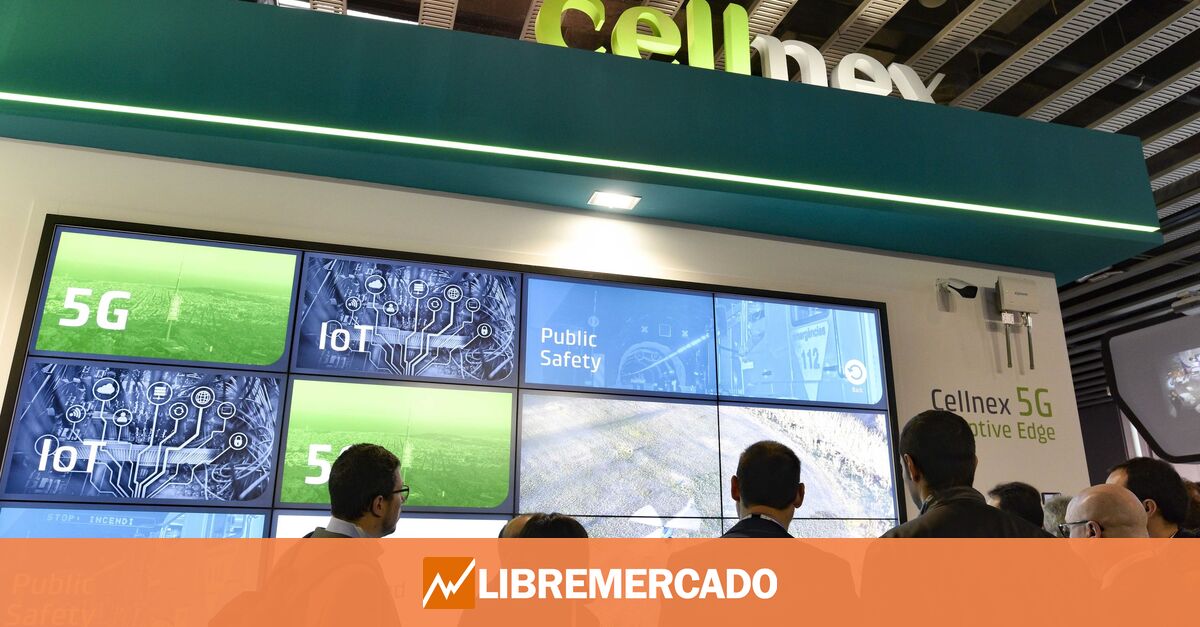Cellnex will pay €3 billion in dividends between 2026 and 2030.

Cellnex expects to pay out at least €3 billion in dividends between 2026 and 2030, the company said on Tuesday as part of Tuesday’s Capital Markets Day in London, where the company stressed it hoped Shareholders could receive minimum dividends of 500 million euros per year from 2026.
With a forecast of €10,000 million of free cash flow until 2030, the new capital allocation will maintain a balance between distribution of results through dividends (minimum €3,000 million in dividends between 2026 and 2030) and/or selective purchases of own shares. , as well as investments in industrial growth opportunities (up to $7 billion).
The technology company explained that it expects shareholders to be able to receive a minimum dividend of 500 million euros per year from 2026, with a minimum annual growth rate of 7.5% in subsequent years, with Cellnex potentially considering an early payment. dividends and/or purchase of own shares depending on the leverage and credit rating of the company.
Cellnex expects to record revenue (excluding carryovers) of between €4.5 billion and €4.7 billion in 2027, reflecting a “solid” order book and guidance for new equipment placements.
In this context, the company led by Marco Patuano explained that the “pass-through effect” entails energy costs that are passed directly on to consumers.
In addition, the phone tower owner is confident that adjusted gross operating profit (Ebitda) will be between 3.8 and 4 billion euros in 2027, while it expects leveraged recurring free cash flow to reach between 2.1 and 2. 3 billion euros, and free cash flow will be between 2.1 and 2.3 billion euros. cash flow will be between 1.1 and 1.3 billion euros.
Cellnex highlighted that it will also release a new financial information framework with more detailed information across all business lines, including information across four lines of business (up from the current three) and the exclusion of revenue from overbilling customers for electricity.
He also stressed that he would reveal a “specific and specific” capital allocation structure aimed at significantly increasing returns for shareholders.
Debt is 6 times EBITDA
In this sense, once investment grade is reached in 2024 (a confirmed target), the new IFRS 16 ‘target’ net debt to EBITDA ratio will be in the range of 5.0-6.0x over the medium to long term, ‘providing the company has additional resources to apply shareholder compensation and/or the growth of new industrial projects.”
The proposed range will allow Cellnex, as detailed, to have the necessary flexibility to adapt its strategy to different scenarios while maintaining consistency in its investment grade commitments.
The company explained that starting Tuesday it is opening a “new chapter in this story” that focuses on four pillars: simplicity, purpose, efficiency and responsibility.
As such, the company is conducting a strategic review of its portfolio to focus on core markets and businesses and “selectively” divest non-core businesses that have limited growth potential to reduce operational complexity.
The company explained that it will henceforth prioritize growth in equipment placement in its towers and that while towers will still be its core business, it will invest in other business lines to reach 15% of revenue in 2027.
In addition, it will implement a comprehensive efficiency improvement plan to improve Ebitda margins by 500 basis points to 64% in 2027 based on optimizing leasing costs by creating a vehicle dedicated to land acquisition in select countries.
Initially, this company will have 10,000 locations, and it is possible that minority shareholders will join its capital.
Cellnex CEO Marco Patuano explained that the company is now focused on improving efficiency, simplifying its portfolio and business, and capturing significant growth opportunities.
He added that this new approach should allow it to “rebalance investments and return significantly more cash to shareholders from 2026.”
For her part, Board President Anne Bouvereau noted that the new roadmap is designed to “continue growth and value creation.”
